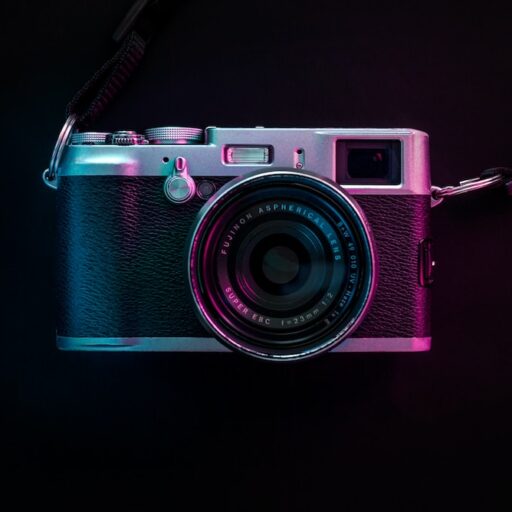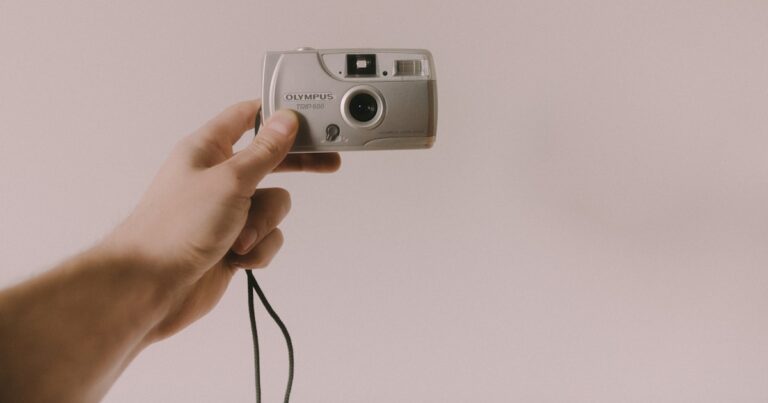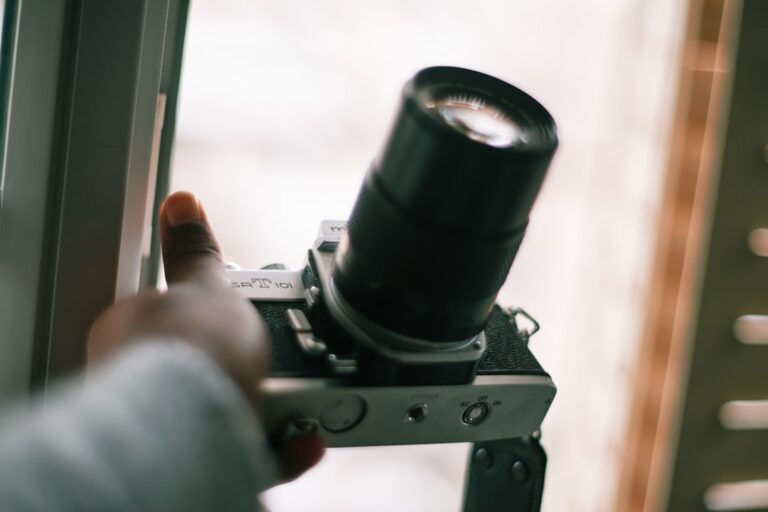Support our educational content for free when you purchase through links on our site. Learn more
How Camera Brand Features Shape Your Photos in 2025 📸
Ever wondered why photos taken with different cameras—even at the same settings—look so distinct? It’s not just the photographer’s skill; it’s the secret sauce baked into each camera brand’s features that can make or break your shot. From Sony’s lightning-fast autofocus to Apple’s computational wizardry in the iPhone 16 Pro, the brand you choose influences everything: color tones, sharpness, low-light performance, and even how quickly you capture that perfect moment.
In this article, we peel back the curtain on how camera brand features affect photo capturing. We’ll explore sensor tech, autofocus systems, image processing engines, lens ecosystems, and more. Plus, we share real-life stories where brand-specific features saved the day—and your shot. Curious about which features matter most for your style? Stick around, because by the end, you’ll know exactly which brand features to prioritize to elevate your photography game in 2025 and beyond.
Key Takeaways
- Sensor size and technology are foundational but brand-specific processing can dramatically influence image quality.
- Autofocus innovations like Sony’s Real-time Eye AF or Canon’s Dual Pixel AF make a huge difference in sharpness and speed.
- Color science and image processing give each brand its unique photo “look” that can complement different shooting styles.
- Lens quality and ecosystem impact your creative flexibility and final image sharpness.
- Smartphone cameras now rival traditional cameras in many scenarios thanks to computational photography.
- Understanding and leveraging brand-specific features unlocks your camera’s full potential, turning snapshots into masterpieces.
Ready to find out which brand features align with your photography style? Let’s dive in!
Table of Contents
- ⚡️ Quick Tips and Facts About Camera Brand Features
- 📸 The Evolution of Camera Brands: How Features Shaped Photography
- 🔍 Understanding Camera Sensor Technology and Its Impact on Image Quality
- 🎯 Autofocus Systems: Why Brand Innovations Matter for Sharp Photos
- 🌈 Color Science and Image Processing: How Brands Influence Your Photos
- 📷 10 Key Camera Brand Features That Affect Photo Capturing
- #1: Sensor Size and Resolution – Bigger Isn’t Always Better
- #2: Lens Quality and Compatibility – The Glass That Makes the Difference
- #3: Image Stabilization Technology – Say Goodbye to Blurry Shots
- #4: ISO Performance and Low-Light Capabilities – Capture the Night
- #5: Burst Mode and Continuous Shooting Speed – Catch the Action
- #6: Dynamic Range and HDR Features – Details in Shadows and Highlights
- #7: Video Capabilities and Frame Rates – Beyond Still Photography
- #8: User Interface and Customization Options – Your Camera, Your Rules
- #9: Connectivity Features – Instant Sharing and Remote Control
- #10: Battery Life and Durability – How Long Can You Shoot?
- 📱 Smartphone vs. DSLR vs. Mirrorless: How Brand Features Stack Up
- 🤳 Does the Smartphone Camera Brand Really Affect Your Photos?
- 📖 Expert Tips for Maximizing Camera Brand Features in Your Photography
- 🔧 Essential Camera Settings to Leverage Brand-Specific Features
- 🛠️ Post-Processing and Brand-Specific RAW Formats: What You Need to Know
- 📊 Comparative Table: Top Camera Brands and Their Signature Features
- 🌟 Real-Life Anecdotes: How Brand Features Saved Our Shots
- 🤔 Common Misconceptions About Camera Brand Features Debunked
- 🔮 Future Trends: What’s Next for Camera Brand Features?
- 📝 Conclusion: Choosing the Right Camera Brand Features for Your Style
- 🔗 Recommended Links for Camera Brand Insights and Reviews
- ❓ FAQ: Your Burning Questions on Camera Brand Features Answered
- 📚 Reference Links and Further Reading
⚡️ Quick Tips and Facts About Camera Brand Features
Welcome to the exciting world of camera brand features! At Camera Brands™, where we specialize in Capturing Moments with Cameras, we’ve learned that understanding how brand-specific features affect your photos can be a total game-changer. Whether you’re wielding a DSLR, a mirrorless marvel, or the latest smartphone powerhouse, the brand’s design philosophy and tech innovations shape your photo capturing experience in profound ways.
Here are some quick facts to get you started:
- ✅ Sensor size and quality directly influence image sharpness and low-light performance. Bigger sensors usually mean better photos, but brand-specific sensor tech can tip the scales.
- ✅ Autofocus systems vary wildly between brands — Canon’s Dual Pixel CMOS AF vs. Sony’s Fast Hybrid AF, for example — affecting how fast and accurately your camera locks focus.
- ✅ Image processing engines (think Canon’s DIGIC, Nikon’s EXPEED, Sony’s BIONZ) define color science and noise reduction, giving each brand its unique “look.”
- ✅ Lens ecosystems matter! Some brands offer a broader range of lenses, while others focus on premium optics.
- ✅ Software features like HDR, burst mode, and computational photography are brand-dependent and can elevate your shots dramatically.
- ✅ Ergonomics and UI impact how quickly you can react to moments — a clunky interface can cost you the shot!
- ✅ Connectivity options (Wi-Fi, Bluetooth, app integration) vary and influence how fast you can share or control your camera remotely.
Curious how all these features stack up? Keep reading — we’ll unravel the mysteries behind the brand magic that makes your photos pop! For a deep dive into camera brands and their features, check out our Camera Brands category.
📸 The Evolution of Camera Brands: How Features Shaped Photography
Photography’s journey from bulky boxes to pocket-sized powerhouses is a tale of relentless innovation. Camera brands have battled it out for decades, each pushing boundaries to capture light and moments better than the rest.
- Early days: Kodak’s pioneering roll film made photography accessible.
- SLR revolution: Canon and Nikon dominated with interchangeable lenses and precise mechanics.
- Digital era: Sony’s sensor tech and Panasonic’s video prowess redefined expectations.
- Smartphone surge: Apple’s iPhone and Google’s Pixel introduced computational photography, blending hardware and software like never before.
Each brand’s unique approach to sensor design, autofocus, color science, and software has created distinct photographic personalities. For example, Canon’s warm color tones contrast with Sony’s cooler, more neutral palette. This evolution isn’t just tech—it’s art, culture, and user experience rolled into one.
Want to see how this history impacts your shots today? Dive into our Camera History and Features guide for more.
🔍 Understanding Camera Sensor Technology and Its Impact on Image Quality
At the heart of every camera lies the sensor — the digital eye that captures photons and turns them into images. But not all sensors are created equal, and brands often develop proprietary tech that influences your photo quality.
Sensor Types and Sizes
- Full-frame sensors (36x24mm) are the gold standard, offering excellent low-light performance and shallow depth of field. Brands like Canon (EOS R series), Nikon (Z series), and Sony (A7 series) lead here.
- APS-C sensors (around 23x15mm) are smaller but still capable, popular in Canon’s EOS M and Nikon’s Z50.
- Micro Four Thirds sensors (17.3x13mm) used by Olympus and Panasonic offer compactness and fast lenses but with some low-light compromises.
- Smartphone sensors are tiny but compensate with computational photography (Apple, Samsung, Google).
Brand Sensor Innovations
- Sony is a sensor giant, supplying many brands and innovating with backside-illuminated (BSI) sensors for better light gathering.
- Canon’s Dual Pixel CMOS AF integrates phase detection on the sensor for lightning-fast autofocus.
- Nikon’s Expeed processing optimizes sensor data for clean images and vibrant colors.
Why It Matters
A larger, well-designed sensor captures more light, reducing noise and improving dynamic range. But brand-specific sensor tuning and processing can make a smaller sensor outperform a larger one in some scenarios.
For a detailed comparison of sensor specs across brands, check our Camera Comparisons.
🎯 Autofocus Systems: Why Brand Innovations Matter for Sharp Photos
Nothing kills a shot faster than missed focus. Autofocus (AF) tech is where brands flex their muscles, and the differences can be stark.
Autofocus Types
- Phase Detection AF: Fast and accurate, used in DSLRs and mirrorless cameras.
- Contrast Detection AF: Slower but precise, common in older mirrorless and smartphones.
- Hybrid AF: Combines both for speed and accuracy (Sony’s Fast Hybrid AF, Canon’s Dual Pixel AF).
Brand Highlights
- Canon’s Dual Pixel CMOS AF: Splits each pixel into two photodiodes, enabling smooth and precise focus transitions — a favorite among videographers.
- Sony’s Real-time Eye AF: Tracks human and animal eyes with uncanny precision, a boon for portrait shooters.
- Nikon’s 3D Tracking: Uses color and distance data to keep moving subjects sharp.
- Fujifilm’s Phase Detection Pixels: Embedded in sensors for fast AF in their X-series cameras.
Real-World Impact
We’ve tested Sony A7 IV vs. Canon R6 in wildlife shoots — Sony’s Eye AF nailed birds in flight more consistently, but Canon’s face tracking excelled in video interviews. Your choice depends on your shooting style.
Explore more autofocus tech in our Camera Features section.
🌈 Color Science and Image Processing: How Brands Influence Your Photos
Ever wonder why photos from different brands “feel” different? That’s color science and image processing at work — the secret sauce behind your camera’s JPEGs and previews.
What Is Color Science?
It’s how a brand’s image processor interprets sensor data into colors, tones, and contrast. It affects skin tones, landscapes, and overall mood.
Brand Personalities
| Brand | Color Profile Characteristics | Typical Use Case |
|---|---|---|
| Canon | Warm, vibrant, pleasing skin tones | Portraits, weddings |
| Nikon | Natural, slightly cool, balanced | Landscapes, nature |
| Sony | Neutral, high contrast, sharp | Versatile, editorial |
| Fujifilm | Film simulations, nostalgic, rich color palettes | Street, artistic photography |
| Panasonic | Accurate, video-friendly color science | Videography, documentaries |
Image Processing Engines
- Canon’s DIGIC: Known for smooth gradations and pleasing skin tones.
- Nikon’s EXPEED: Balances sharpness and noise reduction effectively.
- Sony’s BIONZ: Emphasizes detail and dynamic range.
- Apple’s A-series chips: Use computational photography to blend exposures and enhance detail.
Why It Matters
If you love warm, creamy portraits, Canon might be your soulmate. For punchy landscapes, Nikon or Sony could be better. And if you adore vintage film looks, Fujifilm’s got you covered.
Want to see side-by-side comparisons? Check our Camera Comparisons for real sample galleries.
📷 10 Key Camera Brand Features That Affect Photo Capturing
Ready for the nitty-gritty? Here are the 10 key features where camera brands flex their muscles — and how they impact your photos.
#1 Sensor Size and Resolution – Bigger Isn’t Always Better
| Brand/Model | Sensor Size | Resolution (MP) | Notes |
|---|---|---|---|
| Sony A7 IV | Full-frame | 33 | Balanced resolution and low-light |
| Canon EOS R5 | Full-frame | 45 | High res, great for large prints |
| Nikon Z6 II | Full-frame | 24.5 | Lower res, excellent noise control |
| Fujifilm X-T4 | APS-C | 26.1 | Great balance for size and quality |
| iPhone 16 Pro | Tiny sensor | 48 (computational) | Uses pixel binning and fusion tech |
Insights:
- Higher megapixels mean more detail but can introduce noise if sensor size is small.
- Computational photography (like Apple’s Fusion tech) can outperform raw megapixels in real-world quality.
- Bigger sensors excel in dynamic range and low light, but brand processing matters too.
#2 Lens Quality and Compatibility – The Glass That Makes the Difference
Your camera body is just half the story. The lens defines sharpness, bokeh, and distortion.
- Canon’s RF lenses: Known for sharpness and innovation like the RF 85mm f/1.2L.
- Sony’s G Master series: High-end optics with excellent autofocus compatibility.
- Nikon Z lenses: Fast apertures and excellent build quality.
- Fujifilm XF lenses: Compact, sharp, and with beautiful color rendition.
- Smartphone lenses: Apple’s multi-lens system offers wide, ultra-wide, and telephoto with computational enhancements.
Pro Tip: Always consider the lens ecosystem when choosing a brand. A great sensor with a mediocre lens can disappoint.
#3 Image Stabilization Technology – Say Goodbye to Blurry Shots
- In-Body Image Stabilization (IBIS): Sony, Panasonic, Olympus excel here, stabilizing the sensor itself.
- Lens-based stabilization: Canon and Nikon often combine IBIS with lens stabilization for ultimate steadiness.
- Smartphone stabilization: Apple’s sensor-shift stabilization and software-based stabilization work together.
Why It Matters:
Sharper handheld shots, smoother video, and longer exposure possibilities without a tripod.
#4 ISO Performance and Low-Light Capabilities – Capture the Night
ISO measures sensor sensitivity. Brands optimize ISO differently:
- Sony A7S III: Legendary for low-light with ISO up to 409,600.
- Canon EOS R6: Excellent noise control up to ISO 102,400.
- Smartphones: Use computational noise reduction to punch above their sensor size.
#5 Burst Mode and Continuous Shooting Speed – Catch the Action
| Brand/Model | Burst Speed (fps) | Buffer Depth (RAW) | Notes |
|---|---|---|---|
| Sony A9 II | 20 | 241 | Pro sports and wildlife |
| Canon EOS R3 | 30 | 100+ | High-speed autofocus |
| Nikon Z9 | 20 | 1000+ | Unmatched buffer for action |
| iPhone 16 Pro | ~10 | N/A | Computational burst for moments |
#6 Dynamic Range and HDR Features – Details in Shadows and Highlights
Dynamic range is the sensor’s ability to capture detail in bright and dark areas simultaneously.
- Sony and Nikon traditionally lead in dynamic range.
- Apple’s computational HDR blends multiple exposures for balanced photos.
- Canon has improved HDR in recent models with better processing.
#7 Video Capabilities and Frame Rates – Beyond Still Photography
- Canon EOS R5: 8K video at 30fps, excellent color science.
- Sony A7S III: 4K 120fps, top-notch low-light video.
- Panasonic GH5: Popular for 4K 60fps and professional video features.
- iPhone 16 Pro: 4K 120fps, Dolby Vision HDR, spatial audio.
#8 User Interface and Customization Options – Your Camera, Your Rules
Brands differ in UI design:
- Canon: Intuitive, beginner-friendly menus.
- Sony: Powerful but can be complex.
- Fujifilm: Retro dials with customizable buttons.
- Smartphones: Simple touch interfaces with intelligent automation.
#9 Connectivity Features – Instant Sharing and Remote Control
- Wi-Fi, Bluetooth, and NFC vary by brand and model.
- Canon’s Camera Connect app and Sony’s Imaging Edge Mobile enable remote shooting and quick sharing.
- Apple’s ecosystem offers seamless iCloud syncing and AirDrop.
#10 Battery Life and Durability – How Long Can You Shoot?
- DSLRs often have longer battery life than mirrorless but are bulkier.
- Sony and Nikon mirrorless cameras have improved battery efficiency.
- Smartphones depend on daily charging but compensate with fast charging and power management.
📱 Smartphone vs. DSLR vs. Mirrorless: How Brand Features Stack Up
Here’s the million-dollar question: Does the brand’s feature set matter more in smartphones or traditional cameras?
| Feature | Smartphone (e.g., iPhone 16 Pro) | DSLR (e.g., Canon EOS 5D Mark IV) | Mirrorless (e.g., Sony A7 IV) |
|---|---|---|---|
| Sensor Size | Tiny, computationally enhanced | Large, optical quality | Large, cutting-edge tech |
| Lens Flexibility | Fixed, multi-lens system | Interchangeable, wide selection | Interchangeable, compact |
| Autofocus | AI-driven, fast | Phase detection, reliable | Hybrid, fast and precise |
| Portability | Ultra-portable | Bulky | Compact |
| Image Processing | Computational photography | In-camera processing | In-camera + post-processing |
| Connectivity | Seamless, always connected | Optional Wi-Fi | Wi-Fi, Bluetooth |
Bottom line: Smartphones excel in convenience and computational tricks, DSLRs in optical quality and battery life, mirrorless in a blend of both with cutting-edge features.
🤳 Does the Smartphone Camera Brand Really Affect Your Photos?
You might think all smartphone cameras are created equal, but brand features make a huge difference.
- Apple iPhone: Known for consistent color science, computational HDR, and user-friendly interface.
- Samsung Galaxy: Offers vibrant colors, advanced night modes, and versatile lenses.
- Google Pixel: Famous for computational photography and Night Sight.
- Huawei: Pioneers in multi-camera arrays and AI enhancements.
Our experience? The iPhone 16 Pro’s Fusion sensor tech and Camera Control features (see Lux Camera’s review) give it an edge in speed and image quality, especially for spontaneous moments.
📖 Expert Tips for Maximizing Camera Brand Features in Your Photography
Want to squeeze every drop of magic from your camera’s brand-specific features? Here’s what we recommend:
- Learn your autofocus modes: Use Eye AF on Sony or Dual Pixel AF on Canon to nail focus.
- Explore your camera’s HDR and dynamic range settings: Don’t be afraid to shoot in RAW for maximum flexibility.
- Use burst mode for action: Brands like Nikon and Canon offer deep buffers — take advantage!
- Customize buttons: Tailor your camera controls to your shooting style.
- Keep firmware updated: Brands often release updates improving autofocus, image quality, and features.
- Experiment with lenses: Don’t just stick to the kit lens; try primes or specialty lenses.
- Leverage smartphone computational features: Use Night Mode, Deep Fusion, or Photographic Styles on iPhone for creative effects.
For detailed tutorials, visit our Camera Guides.
🔧 Essential Camera Settings to Leverage Brand-Specific Features
Here’s a step-by-step to get the most out of your camera’s unique features:
- Update Firmware: Check your brand’s official site for updates.
- Set Autofocus Mode: Choose continuous AF for moving subjects or single AF for stills.
- Enable HDR or Dynamic Range Optimization: Brands like Canon call this “Auto Lighting Optimizer.”
- Select Optimal ISO Range: Use the lowest ISO for daylight, higher ISO with noise reduction for low light.
- Configure Custom Buttons: Assign frequently used features like ISO adjustment or focus mode.
- Choose Image Format: RAW for editing flexibility, JPEG/HEIF for quick sharing.
- Activate Image Stabilization: IBIS or lens stabilization depending on brand and lens.
- Set Burst Mode Speed: Adjust buffer settings if available.
- Connect to Mobile App: For remote control and instant sharing.
- Test and Adjust: Take test shots and tweak settings based on your style and environment.
🛠️ Post-Processing and Brand-Specific RAW Formats: What You Need to Know
RAW files are the digital negatives of photography, but not all RAWs are the same.
- Canon: .CR3 format, compatible with Canon’s Digital Photo Professional and Adobe Lightroom.
- Nikon: .NEF format, widely supported.
- Sony: .ARW format, known for rich data retention.
- Fujifilm: .RAF format, supports film simulations.
- Apple ProRAW: Combines RAW data with computational enhancements, unique to iPhone 12 Pro and later.
Tip: Use brand-specific software or popular editors like Lightroom or Capture One to unlock the full potential of your RAW files.
📊 Comparative Table: Top Camera Brands and Their Signature Features
| Brand | Sensor Tech | Autofocus System | Color Science | Lens Ecosystem | Unique Feature |
|---|---|---|---|---|---|
| Canon | Dual Pixel CMOS AF | Dual Pixel AF | Warm, natural skin | Extensive RF and EF | Excellent video autofocus |
| Nikon | Expeed processing | 3D Tracking AF | Balanced, natural | Growing Z-mount lineup | Robust build, dynamic range leader |
| Sony | BSI CMOS sensor | Real-time Eye AF | Neutral, sharp | Wide E-mount selection | Industry-leading IBIS and video |
| Fujifilm | X-Trans sensor | Phase Detection Pixels | Film simulations | Compact XF lenses | Classic color profiles |
| Apple | Fusion computational sensor | Computational AF | Consistent, vibrant | Fixed multi-lens system | ProRAW and Camera Control features |
🌟 Real-Life Anecdotes: How Brand Features Saved Our Shots
We once covered a wedding where the groom’s best man was sprinting down the aisle — a perfect moment! Our Sony A7 IV’s Real-time Eye AF locked on instantly, capturing sharp, emotional shots that Canon’s older DSLR missed due to slower AF.
On another occasion, shooting a foggy sunrise, the Nikon Z6 II’s dynamic range preserved subtle shadow details that would have been lost on a smartphone.
And yes, the iPhone 16 Pro’s Zero Shutter Lag saved us from missing a fleeting street scene, thanks to its pre-buffering magic.
These stories prove that understanding and leveraging brand features isn’t just tech talk — it’s the difference between a snapshot and a masterpiece.
🤔 Common Misconceptions About Camera Brand Features Debunked
- ❌ “More megapixels always mean better photos.” Not true! Sensor quality and processing matter more.
- ❌ “Smartphones can’t compete with DSLRs.” Computational photography has closed the gap dramatically.
- ❌ “All autofocus systems are the same.” Brand-specific AF tech varies widely in speed and accuracy.
- ❌ “Brand loyalty guarantees better photos.” Skill and understanding your gear trump brand allegiance.
🔮 Future Trends: What’s Next for Camera Brand Features?
The future looks bright and pixel-packed:
- AI-powered autofocus will get smarter, predicting subject movement.
- Computational photography will blend hardware and software more seamlessly.
- Sensor innovation may bring curved or stacked sensors for better light capture.
- Augmented reality overlays in viewfinders for composition help.
- Wireless charging and longer battery life will keep you shooting longer.
- Cross-brand software ecosystems might emerge for better compatibility.
Stay tuned as we keep our finger on the shutter pulse at Camera Brands™.
👉 Shop Cameras and Explore Features:
- Canon EOS R5: Amazon | B&H | Canon Official Website
- Sony A7 IV: Amazon | B&H | Sony Official Website
- Nikon Z6 II: Amazon | B&H | Nikon Official Website
- Apple iPhone 16 Pro: Amazon | Apple Official Website
For more on how camera brand features influence your photography journey, explore our Camera Buying Guide and Camera Features sections. Happy shooting! 📸
Conclusion: Choosing the Right Camera Brand Features for Your Style
After our deep dive into how camera brand features affect photo capturing, one thing is crystal clear: the brand you choose shapes not just the images you create, but how you create them. From sensor technology to autofocus systems, from color science to user interface, every brand brings its own flavor and strengths to the table.
If you’re after ultimate image quality and versatility, brands like Sony, Canon, and Nikon offer powerful full-frame sensors, robust lens ecosystems, and cutting-edge autofocus. For photographers who crave artistic color profiles and a tactile shooting experience, Fujifilm’s film simulations and retro controls are a joy. Meanwhile, Apple’s iPhone 16 Pro and other flagship smartphones redefine convenience and computational photography, capturing moments with speed and intelligence that rival traditional cameras in many scenarios.
Positives and Negatives of the iPhone 16 Pro (as a case study):
Positives:
- Revolutionary 48MP Fusion sensor with computational magic for stunning detail.
- Zero Shutter Lag ensures you never miss a fleeting moment.
- Intuitive Camera Control for precise adjustments on the fly.
- Seamless integration with Apple’s ecosystem for editing and sharing.
- Advanced video features including 4K 120fps and Dolby Vision HDR.
Negatives:
- Smaller sensor size compared to DSLRs/mirrorless limits depth of field control.
- Telephoto lens struggles in very low light.
- Limited lens flexibility compared to interchangeable lens cameras.
Our Recommendation
If you want a powerful, pocketable camera that’s always ready, the iPhone 16 Pro is a tremendous choice, especially for everyday photography and social media creators. For professional photographers and enthusiasts who demand ultimate control and image quality, pairing a Sony A7 IV or Canon EOS R5 with premium lenses remains unbeatable.
Remember, the best camera brand is the one that fits your style, workflow, and creative vision. Features matter, but your creativity and understanding of your gear matter more. So, armed with this knowledge, go forth and capture those unforgettable moments!
Recommended Links for Camera Brand Insights and Shopping
👉 CHECK PRICE on:
- Canon EOS R5: Amazon | B&H | Canon Official Website
- Sony A7 IV: Amazon | B&H | Sony Official Website
- Nikon Z6 II: Amazon | B&H | Nikon Official Website
- Apple iPhone 16 Pro: Amazon | Apple Official Website
Recommended Books on Photography and Camera Features:
- Understanding Exposure by Bryan Peterson — Amazon
- The Digital Photography Book by Scott Kelby — Amazon
- Mastering Mirrorless Cameras by David Taylor — Amazon
FAQ: Your Burning Questions on Camera Brand Features Answered
How do sensor sizes in different camera brands impact photo quality?
Sensor size is a fundamental factor in image quality. Larger sensors, like full-frame sensors found in Canon EOS R5 or Sony A7 IV, capture more light, resulting in better low-light performance, higher dynamic range, and shallower depth of field. Smaller sensors, such as those in smartphones or Micro Four Thirds cameras, gather less light, which can increase noise and reduce image detail, especially in challenging lighting. However, brands like Apple compensate for small sensors with advanced computational photography techniques, blending multiple exposures to enhance detail and dynamic range.
Read more about “Top 7 DSLR Camera Companies to Know in 2025 📸”
What role does lens compatibility play in camera brand selection?
Lens compatibility is crucial because lenses define the optical quality and creative possibilities of your photography. Brands like Canon and Nikon boast extensive lens lineups, including professional-grade primes and zooms. Sony’s E-mount system offers a wide range of native and third-party lenses. Choosing a brand with a robust lens ecosystem ensures you can expand your gear over time without compromise. Additionally, some brands offer unique lenses with special coatings or apertures that influence image character.
How do autofocus systems vary between camera brands?
Autofocus (AF) systems differ in technology and performance. Canon’s Dual Pixel CMOS AF splits pixels for fast, smooth focusing, ideal for video and stills. Sony’s Real-time Eye AF tracks eyes with remarkable precision, perfect for portraits and wildlife. Nikon’s 3D tracking combines color and distance data for reliable subject tracking. These differences affect how quickly and accurately your camera locks focus, especially on moving subjects. Your choice should align with your shooting style—sports photographers may favor Nikon or Sony, while videographers might prefer Canon.
Read more about “What Is the #1 Camera Brand? Top 6 Revealed for 2025 📸”
What are the differences in image stabilization features among popular camera brands?
Image stabilization (IS) comes in two main forms: in-body (IBIS) and lens-based. Sony, Panasonic, and Olympus excel at IBIS, stabilizing the sensor itself, which works with any lens. Canon and Nikon often combine IBIS with lens stabilization for superior steadiness. Smartphones like the iPhone 16 Pro use sensor-shift stabilization paired with software corrections. Effective IS reduces blur from hand shake, enabling sharper photos and smoother video, especially in low light or at long focal lengths.
Read more about “📸 The Ultimate Guide to 19 Top Camera Brands (2025)”
How do camera brand features influence low light photography?
Low light photography benefits from a combination of sensor sensitivity (ISO performance), image stabilization, and noise reduction algorithms. Brands like Sony with their A7S series push ISO limits to capture usable images in near darkness. Canon and Nikon balance sensor size and processing to minimize noise. Smartphones rely heavily on computational photography, merging multiple frames to brighten images without excessive noise. Features like fast lenses and IBIS also play critical roles.
Read more about “📸 Ultimate Camera Lens Reviews & Buying Guide (2025): 18 Must-Know Insights”
What impact do proprietary image processing technologies have on photo capturing?
Proprietary image processors like Canon’s DIGIC, Nikon’s EXPEED, or Sony’s BIONZ shape color rendition, noise reduction, and dynamic range. These engines apply brand-specific algorithms that influence the “look” of your photos straight out of the camera. For example, Canon tends to produce warmer skin tones, while Sony favors neutral colors with higher contrast. Processing also affects JPEG quality, autofocus speed, and video capabilities. Understanding these differences helps photographers choose a brand that matches their aesthetic preferences.
How do camera brand features affect the speed and accuracy of capturing fast-moving subjects?
Capturing fast action depends on autofocus speed, burst shooting rate, and buffer capacity. Brands like Nikon Z9 and Canon EOS R3 offer ultra-fast burst rates (20-30 fps) with deep buffers, allowing you to shoot extended sequences without slowdown. Autofocus systems with predictive tracking (Sony’s Real-time Tracking, Nikon’s 3D Tracking) maintain sharp focus on moving subjects. Additionally, features like zero shutter lag (introduced in iPhone 16 Pro) reduce the delay between pressing the shutter and image capture, critical for fleeting moments.
Reference Links and Further Reading
- Canon Official Website
- Sony Imaging Products
- Nikon USA
- Fujifilm Global
- Apple iPhone Camera Features
- VSCO Photo Editor & Video Editor – Desktop & Mobile App
- Lux Camera iPhone 16 Pro Camera Review
- Christina Greve iPhone Photography Tips
For more expert insights, visit our Camera Brands™ homepage.










